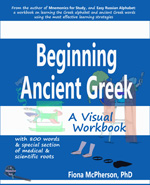Learning the Greek alphabet
As I said in my discussion of different scripts, the Hellenic languages use the Greek alphabet. Here it is. I’m afraid the table is a little complicated, because (a) each letter has a name, which it’s useful to know, and (b) there are some differences in pronunciation between Ancient Greek (which is still a language that people want to learn today), and Modern Greek. To try and keep it simple, I have only mentioned those that are not as they seem to an English speaker (Ancient Greek), or, in Modern Greek, those that vary from their Ancient sounds.
| Name | Transcription | Ancient Greek pronunciation | Modern Greek pronunciation | |
| Α α | alpha | a | short as in await or cup, or long as in father | as in father |
| Β β | beta | b | v as in vote | |
| Γ γ | gamma | g | as in get, but sometimes like sing | y as in yellow |
| Δ δ | delta | d | th as in then | |
| Ε ε | epsilon | e | short e, as in set | |
| Ζ ζ | zeta | z | as in wisdom | z as in zoo |
| Η η | eta (long e) | e | long e, as in hair | i as in machine |
| Θ θ | theta | th | t as in top | th as in thin |
| Ι ι | iota | i | short, as in hit | |
| Κ κ | kappa | k | ||
| Λ λ | lambda | l | ||
| Μ μ | mu | m | ||
| Ν ν | nu | n | ||
| Ξ ξ | xi | ks | ||
| Ο ο | omicron | o | short as in pot | |
| Π π | pi | p | ||
| Ρ ρ | rho | r | trilled | |
| Σ ς | sigma | s | ||
| Τ τ | tau | t | ||
| Υ υ | upsilon | u or y | short as in French lune, or long as in French ruse | |
| Φ φ | phi | ph | as in pot | f as in five |
| Χ χ | chi (kh) | ch | as in cat | ch as in loch or Bach |
| Ψ ψ | psi | ps | both pronounced, as in lips | |
| Ω ω | omega (long o) | ô | as in saw | short o, as in soft |
In my workbook for the Greek script, I use several strategies to help learners achieve mastery quickly and thoroughly. These strategies include:
- grouping
- visual mnemonics
- test questions to help you practice
- vocabulary lists for further practice.
These vocab lists appear for each group of letters, so you can practice on words that only use the letters you have learned. To make them easier to read (and also, beneficially, remember), the words are mostly cognate with English words (my Indo-European Cognate Dictionary was invaluable for that).
Some of the visual mnemonics are ‘cards’ for each letter. These mnemonic cards include a keyword to help you remember the name of the letter, and another one to help you remember how it’s pronounced. Here are some examples:
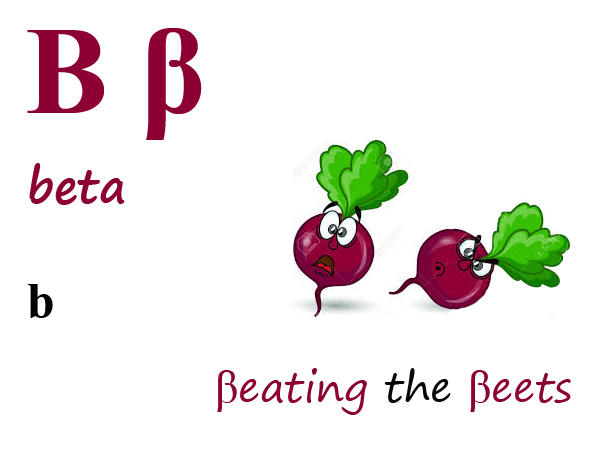
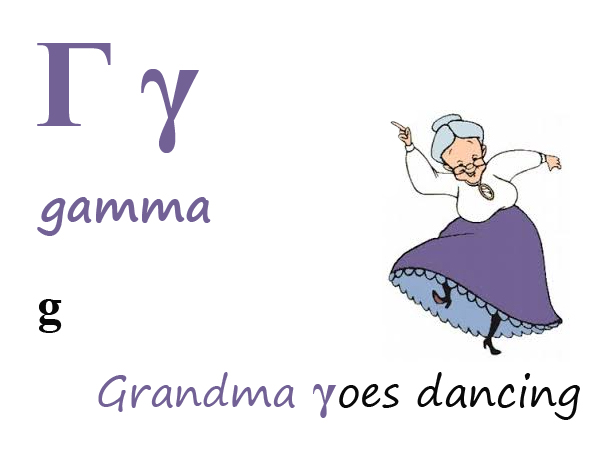
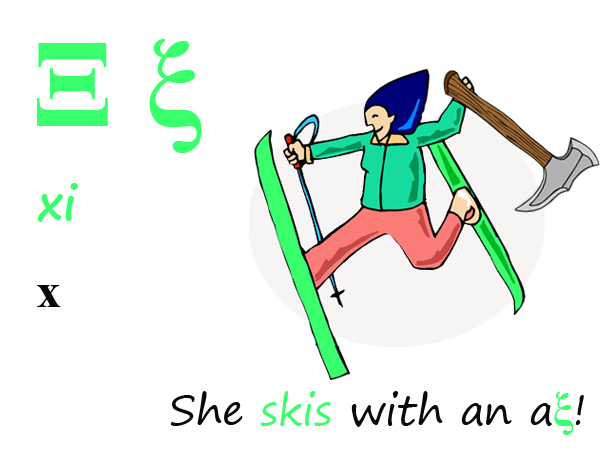
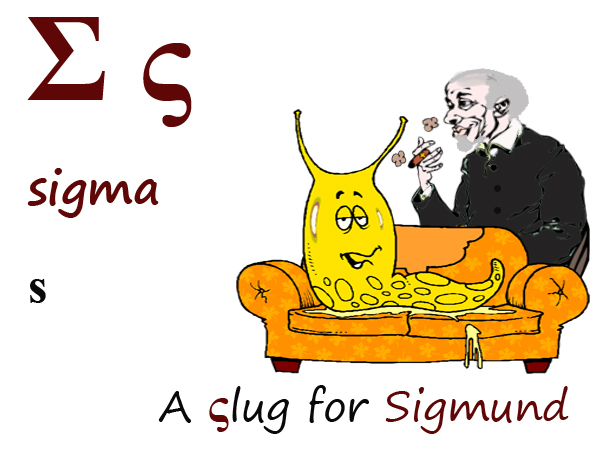
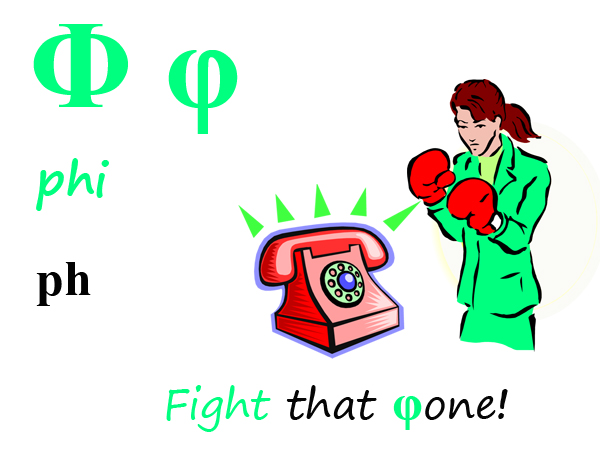
Each “card” shows, first, the upper and lower case forms of the Greek letter, written in a color picked out from the picture. Below these is the English letter that is translated as its equivalent. Below that is a word, in English, showing how that letter is pronounced. The part of the word that is the appropriate sound is written using the Greek letter. A picture showing the meaning of the word is then shown — not because the word is anything other than simple! but because images are generally much more memorable than words.
The images, where necessary, are also used to help remember the shapes of unfamiliar letters, for example:
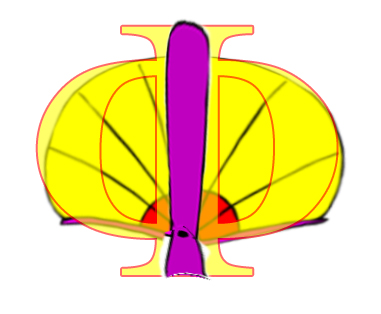
You can augment the lessons in the book with some activities I've provided. Even if you don't have the book, if you are learning Russian, or are interested in refreshing your knowledge of it, you may find the games helpful or fun.
